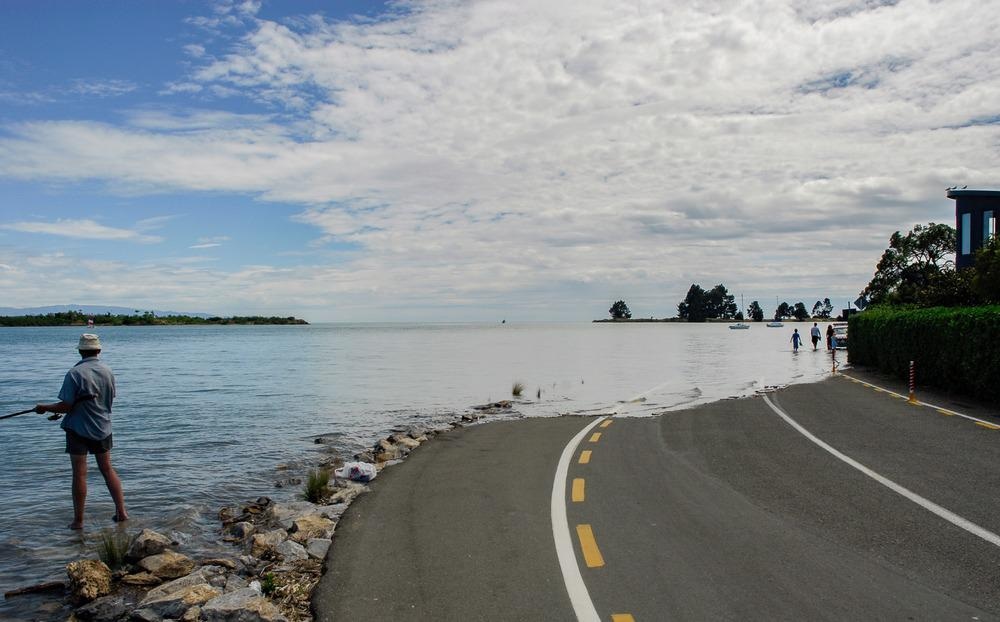NASA warns the 2030s could see a rapid increase in flooding, particularly for US coastal regions, due to rising sea levels and the moon’s 'wobble'.

Image Credit: MainlanderNZ/Shutterstock.com
High-tide floods (HTFs) are an all-too-familiar problem for residents of US towns and cities on the Gulf and Atlantic coasts. In 2019, the National Oceanic and Atmospheric Administration (NOAA) reported 600 HTFs. The problem is expected to worsen as sea levels continue to rise due to climate change.
A new report produced by a team of researchers led by scientists at NASA’s Sea Level Change Team based at the University of Hawaii reveals that the problem could be even more extreme sooner than previously suspected, thanks to the influence of the lunar cycle.
The study, published in the latest edition of the journal Nature Climate Change, demonstrates how the combined effect of sea-level rise and a quirk in the moon’s orbit will result in high tides exceeding current thresholds across the US with increasing frequency.
Depending on the alignment of the Moon with the Earth and the Sun, these floods will often occur in clusters. These grouped flood events could last as long as a period of months, meaning residents of some cities may have to cope with floods occurring as frequently as every few days.
The effect will commence in the mid-2030s and worsen during the 2040s.
“Low-lying areas near sea level are increasingly at risk and suffering due to the increased flooding, and it will only get worse,” says Bill Nelson, NASA Administrator.
The combination of the Moon’s gravitational pull, rising sea levels, and climate change will continue to exacerbate coastal flooding on our coastlines and across the world."
Bill Nelson, NASA Administrator
“NASA’s Sea Level Change Team is providing crucial information so that we can plan, protect, and prevent damage to the environment and people’s livelihoods affected by flooding.”
How Does a Moon ‘Wobble’ Result in High-Tide Flooding?
NASA’s findings indicate that starting in the mid-2030s, cities of the widely separated Atlantic and Gulf coastlines will begin to experience synchronized flooding, despite the considerable distance that separates them.
This will be because of a regular ‘wobble’ in the Moon’s orbit which completes every 18 and a half years or so. The wobble was first observed in the 18th century. However, the effect of this wobble on the Moon’s gravitational influence over the tides, when coupled with rising sea levels, is a new factor. This is because, during half of the Moon’s 18.6 year-cycle, Earth’s tides are suppressed. Thus, high-tides are lower, while low-tides are higher. Sea-level rise as a result of increasing global temperatures pushes those high-tide levels up.
Half of the Moon’s regular cycle helps counteract sea-level rise’s effect on high-tides. During the next half of that cycle, the effect will flip, and instead of countering these effects, the Moon’s influence will amplify them.
The Moon is currently in the amplifying stage of this cycle, yet the effect on coastal regions has not been too devastating. The situation will be radically different when the Moon next reaches this stage in its cycle.
By this point, the world will have experienced another ten years of sea-level rise. Coupled with a ‘lunar-assist’, this will result in significant increases in flood incidence and duration on almost all US mainland coasts as well as Hawaii and Guam. The only areas that will likely be spared these HTFs are Alaska and other far northern coastlines.
An Accumulating Effect
Because HTFs tend to involve much less water than the flooding caused by hurricanes and other storm surges, we tend to view them as somewhat less of a problem. But these events, while less extreme, have an effect that builds over time, meaning that an increase in frequency represents a significant problem.
“It’s the accumulated effect over time that will have an impact. But, if it floods 10 or 15 times a month, a business can’t keep operating with its parking lot under water,” says Phil Thompson, an assistant professor at the University of Hawaii and lead author of the aforementioned study. “People lose their jobs because they can’t get to work. Seeping cesspools become a public health issue.”
To obtain their results, the researchers observed 89 tide gauge locations in every US state barring Alaska. With this data, astronomical cycle projections, El Niño event modeling, and sea-level rise scenarios provided by the NOAA, the team created a new statistical model that projected behavior until 2080.
The team’s findings will be incorporated into an HTF-prediction tool already available on NASA’s sea-level portal. This could prove vital in helping coastal urban planners prepare for future flood events and deal with extreme HTFs.
“From a planning perspective, it’s important to know when we’ll see an increase,” concludes Ben Hamlington of NASA’s Jet Propulsion Laboratory, leader of NASA’s Sea Level Change Team and paper co-author. “Understanding that all your events are clustered in a particular month, or you might have more severe flooding in the second half of a year than the first — that’s useful information.”
References and Further Reading
Thompson. P. R., Widlansky. M. J., Hamlington. B., et al. [2021] Rapid increases and extreme months in projections of United States high-tide flooding. Nature Climate Change, https://doi.org/10.1038/s41558-021-01077-8
Disclaimer: The views expressed here are those of the author expressed in their private capacity and do not necessarily represent the views of AZoM.com Limited T/A AZoNetwork the owner and operator of this website. This disclaimer forms part of the Terms and conditions of use of this website.